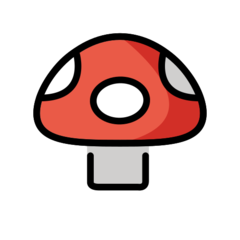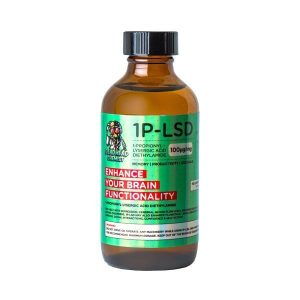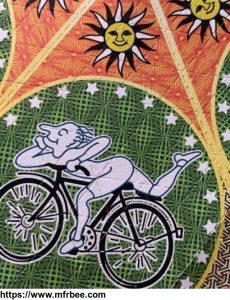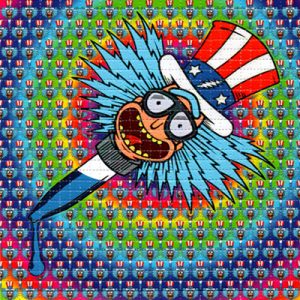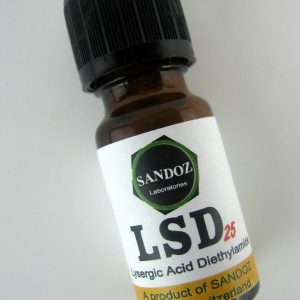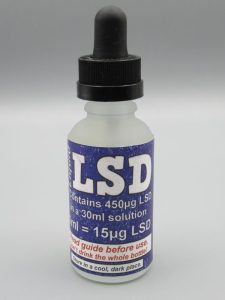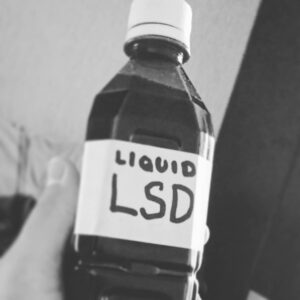LSD

WHAT IS LSD?
LSD (Lysergic Acid Diethylamide) is one of the most potent, mood-changing chemicals. It is manufactured from lysergic acid, which is found in the ergot fungus that grows on rye and other grains.
LSD is produced in crystal form in illegal laboratories, mainly in the United States. These crystals are converted to a liquid for distribution. It is odorless, colorless, and has a slightly bitter taste. Known as “acid” and by many other names, LSD is sold on the street in small tablets (“microdots”), capsules or gelatin squares (“window panes”). It is sometimes added to absorbent paper, which is then divided into small squares decorated with designs or cartoon characters (“loony toons”). Occasionally it is sold in liquid form. But no matter what form it comes in, LSD leads the user to the same place-a serious disconnection from reality.
LSD users call an LSD experience a “trip,” typically lasting twelve hours or so. When things go wrong, which often happens, it is called a “bad trip,” another name for a living hell.
Abuse of LSD
LSD is taken orally, typically from blotter paper. Sometimes, it is ingested in liquid form through a dropper, or it is taken in pill or capsule form. Once the drug is absorbed through mucous membranes in the mouth and moved through the digestive system, it begins to affect the brain. This takes between 30 and 90 minutes; however, the direct effects from an LSD high can last up to 12 hours.
This powerful hallucinogen can, if taken regularly enough, lead to cross-tolerance with other hallucinogenic drugs like mescaline, psilocybin, and DMT. Some medical researchers are considering whether microdosing LSD could become a future treatment for chronic depression, anxiety, and bipolar disorder; however, as LSD is abused now, it is unpredictable and can cause serious problems.
While LSD is not considered addictive, it is frequently abused and can lead to serious side effects. Even one dose can cause lasting side effects, although this is more likely to happen if a person abuses LSD several times or at high doses.
There are two common long-term effects that LSD causes:
Drug-induced psychosis: People who are at greater risk of developing schizophrenia or other forms of psychosis, often related to family history or genetics, may have this mental health condition triggered if they take LSD or other hallucinogens.
Hallucinogen persisting perception disorder (HPPD): Referred to colloquially as “flashbacks,” these episodes are random and spontaneous, leading the person to re-experience some of the hallucinations from a previous trip for no discernible reason. They may also experience halos or light trails attached to moving objects in their visual field.
Other long-term effects are rarer, but they can occur. A heart attack or stroke could occur if the person’s heart rate and blood pressure elevate enough during a trip or if they are predisposed to cardiovascular conditions. Consistent abuse of LSD over time may exacerbate diabetes due to elevated blood sugar, although this is extremely rare. Changes to the brain could lead to cognitive and memory problems as well as difficulty with verbal communication.
LSD causes several effects after it begins to bind with receptor proteins in the brain.These are divided into physical and psychological effects.
Related Products
-
100ML 1P-LSD Microdosing KitRated 0 out of 5
$100.00 – $220.00
-
205ug IMPORTED Triangular LSD Tabs Needlepoint 99% PURE CrystalRated 0 out of 5
$100.00 – $450.00
-
LSD BLOTTERSRated 0 out of 5
$80.00 – $210.00
-
LSD Vial (Liquid LSD)Rated 0 out of 5
-
LSD LIQUID DROPPERSRated 0 out of 5
$40.00 – $75.00
-
LSD PAPER TABSRated 0 out of 5
$22.00 – $350.00
-
Liquid LSDRated 0 out of 5
$250.00
-
LSD SHEETRated 0 out of 5
$350.00
